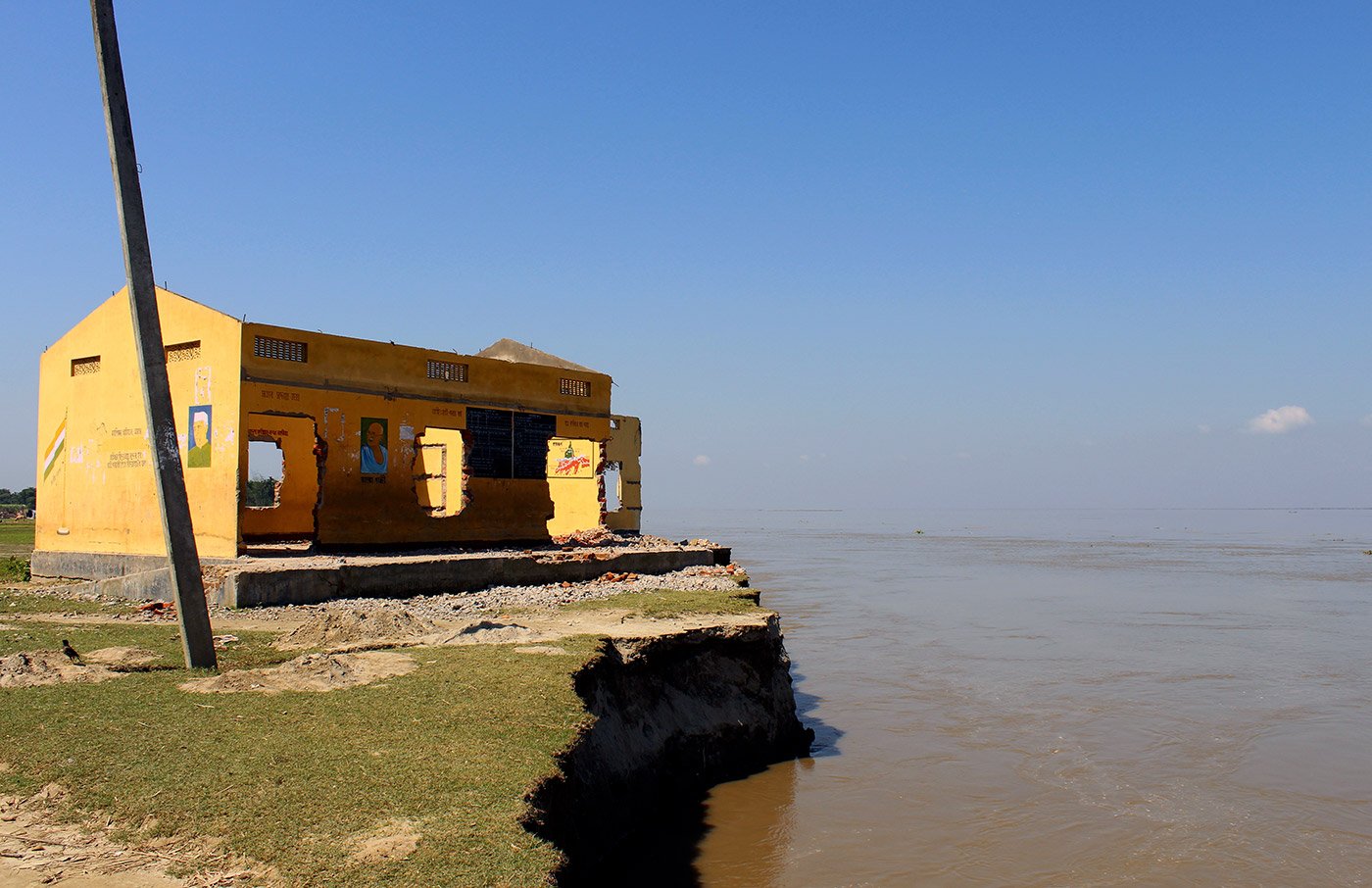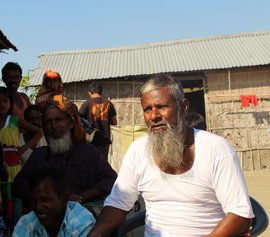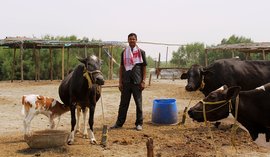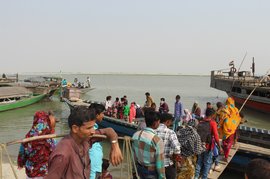No. 2 Panikhaiti Lower Primary School stood in ruins less than a metre away from the banks of the Brahmaputra. The slogan 'Prathamik shiksha prati goraki shishur moulik adhikar ' (‘Elementary education is the fundamental right of every child’) could be seen on the inside wall of the school building. On the other side of the wall, facing the river, was a portrait of Mahatma Gandhi and another message in Assamese: 'The truth always prevails'.
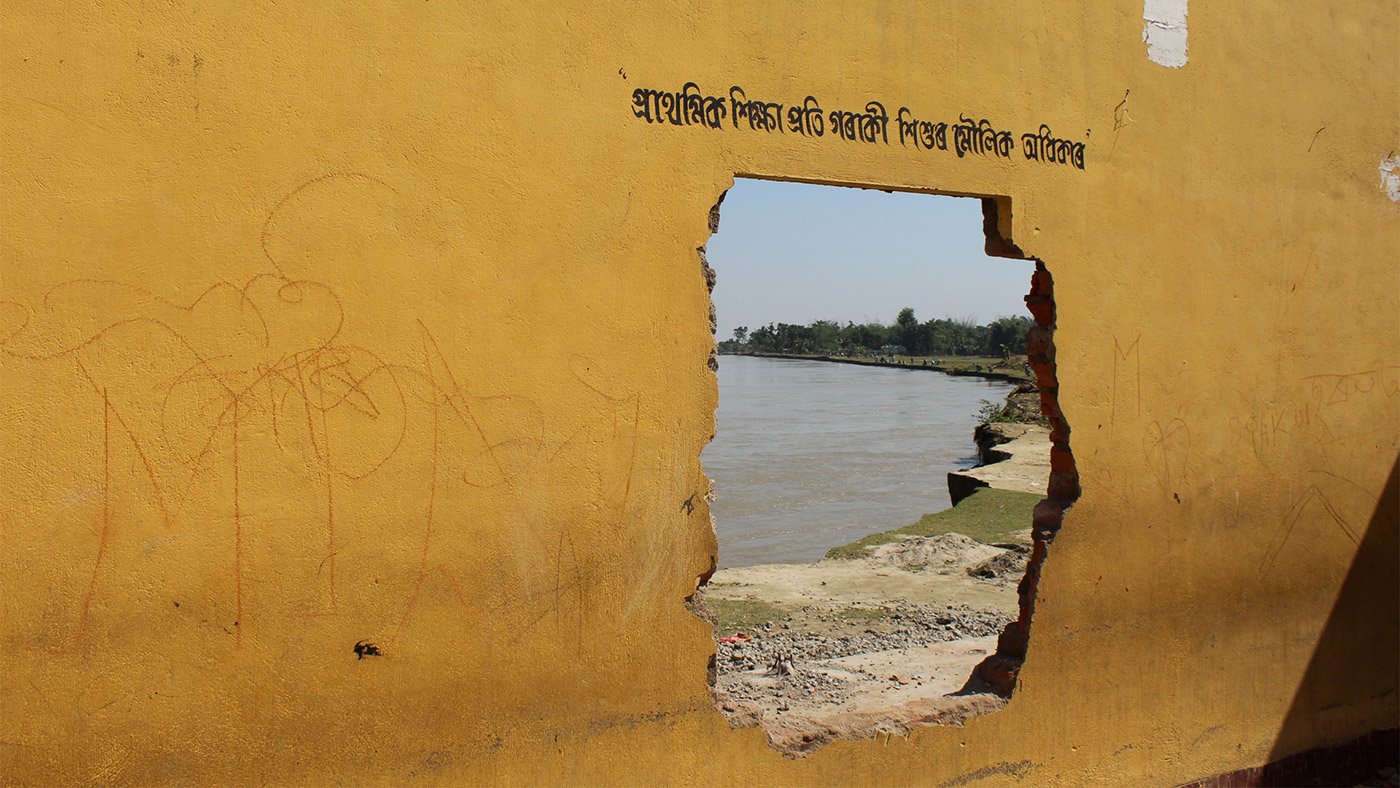
The crumbling school wall in Panikhaiti proclaiming 'Elementary education is the fundamental right of every child'
For the students and lone teacher of the only government educational institution in Panikhaiti village on Sontali char , it was a bitter truth that eventually prevailed. The slow climb of the river and the ruins of the school building were a testimony to the impermanence of life on the chars on the Brahmaputra. Rehena Rehman, a former student says, “…the school has eroded away. We have fond memories of going to school together…”
By October 2016, when the turbulent river showed no signs of retreating, and their pleas to the Assam government to protect the school from erosion were ignored, the villagers had removed the doors, windows, tin roof, desks and benches from the slowly-submerging building.
Chars are small, sandy islands formed by fluvial processes all along the Brahmaputra in Assam (See Struggles of the sandbar people on PARI). They sustain a population of roughly 24 lakh people. Panikhaiti village and the greater Sontali char area are located in the Boko legislative constituency of Kamrup district.
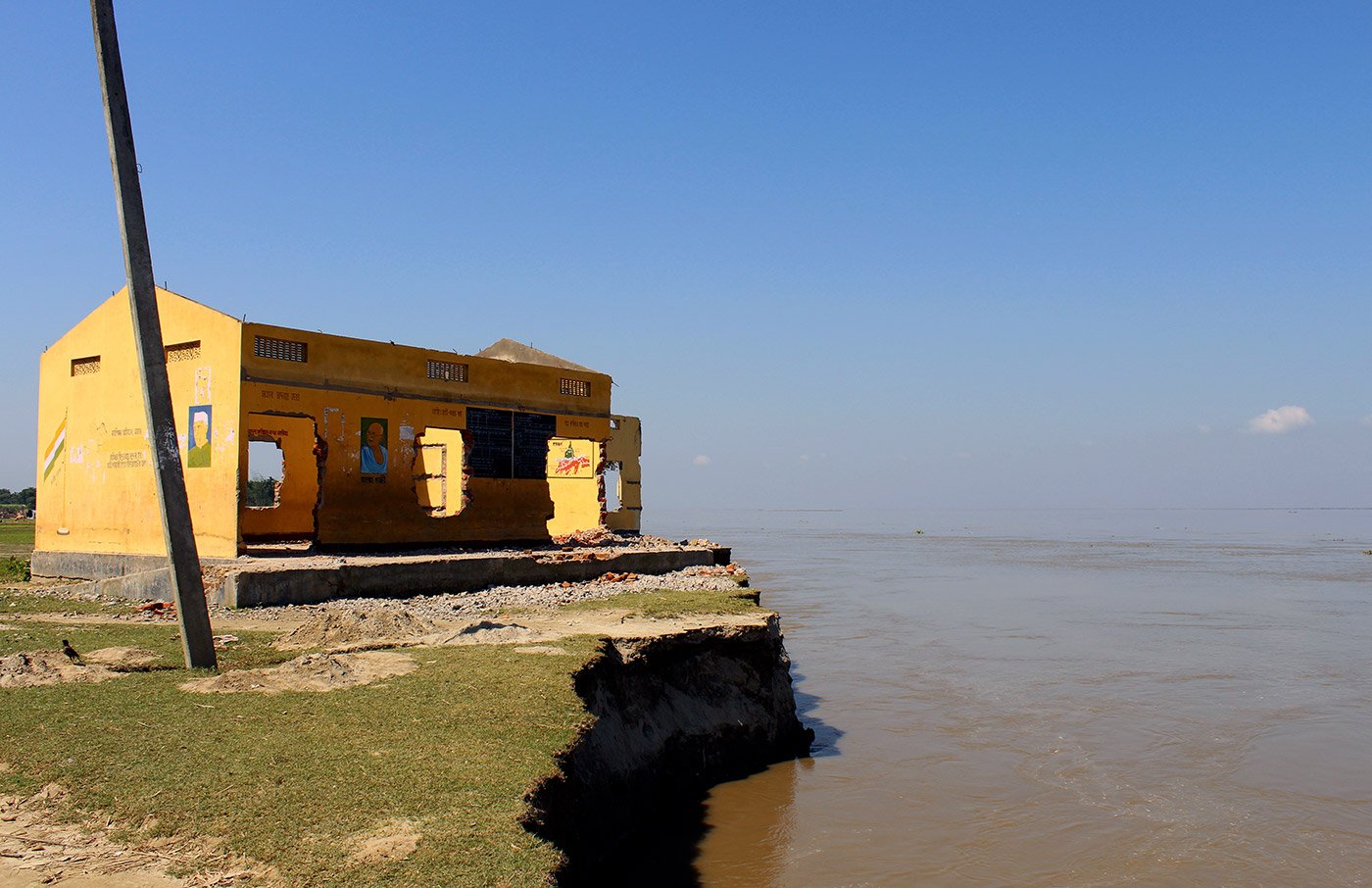
This is what remained of No 2. Panikhaiti Lower Primary School in October 2016 as the river steadily ate into it
A few weeks later, on a second visit to the char on November 28, 2016, the ruins of the school had completely disappeared. Where the building once stood, there was now only a stretch of water. Mechanised country boats ferried passengers and goods across this new landscape.
The school now runs in a makeshift tin structure about 500 metres from the submerged building. This shed, in the courtyard of headmaster Tariq Ali’s residence, is barely 15 metres from the riverbank. Regular classes and quarterly examinations are being conducted here.
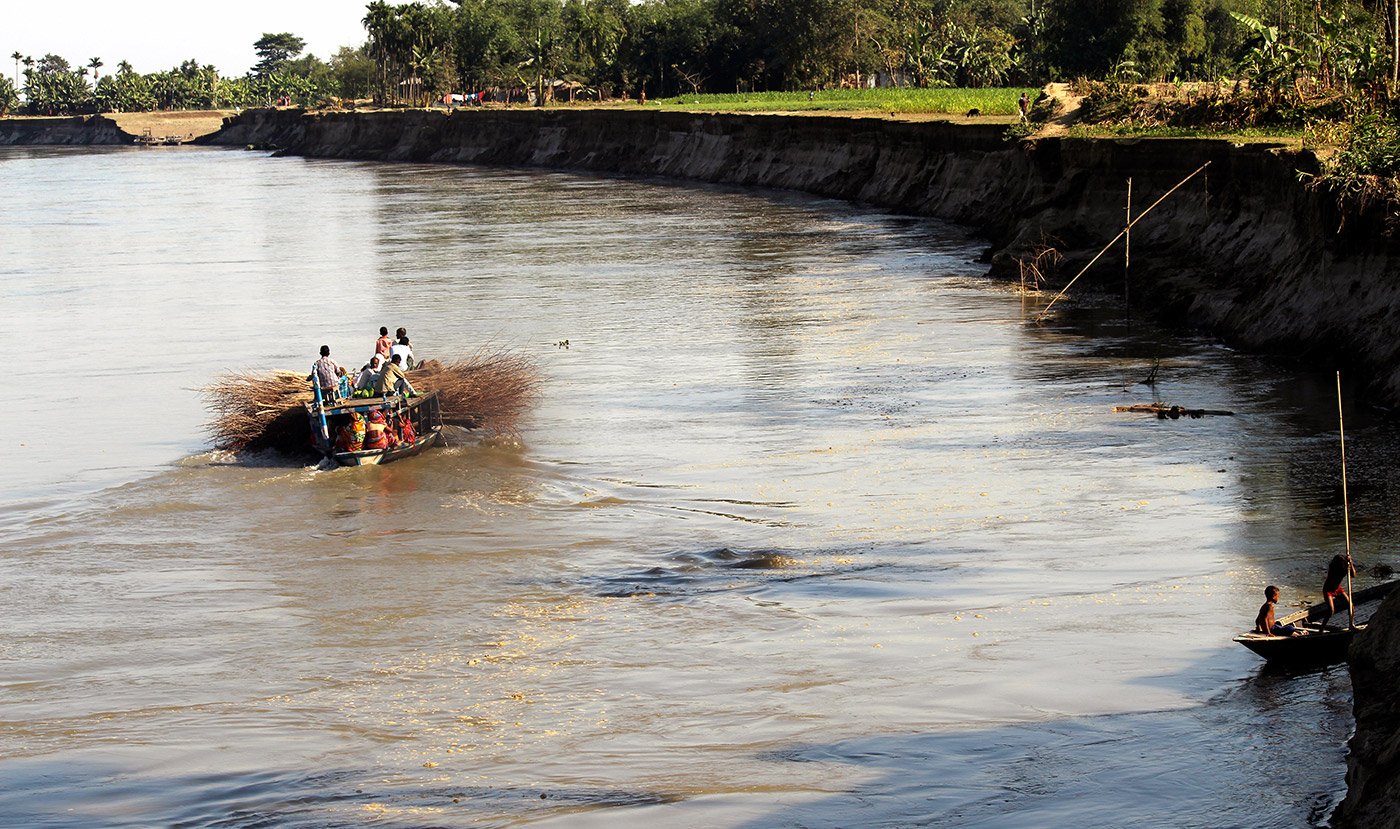
November 2016: where No. 2 Panikhaiti Lower Primary School once stood
In 1974, when residents of Panikhaiti decided to set up a school for 6-11 year-old children in the village, Rubeya Khatun (now in her 70s) and her family of farmers came forward to donate two bighas of land [7.5 bighas make a hectare in Assam]. The villagers ran the school themselves until the Department of Elementary Education recognised the institution in 1982 and appointed Tariq Ali its teacher. The char has a few private schools and madrasas, but No. 2 Panikhaiti Lower Primary School had remained the only government-run school ever since. It also served as a community space for meetings and discussions. The single-teacher school attracted children from nearby chars and villages.
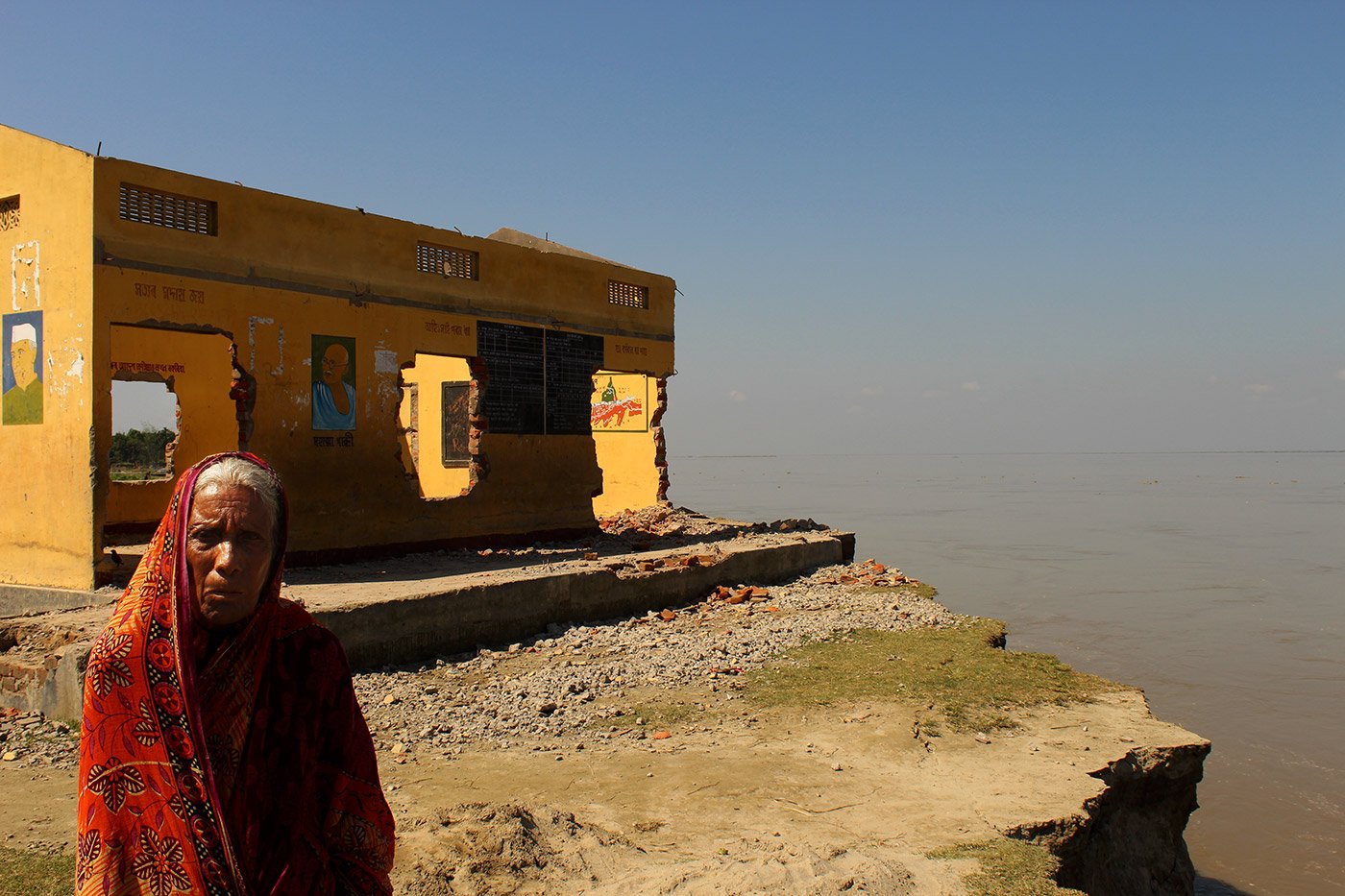
Rubeya Khatun at the ruins of the school in October 2016. Her family of farmers had donated land for the building. Their land and the school are now submerged
In just over two months in 2016, the rising Brahmaputra eroded more than two-thirds of the area of Panikhaiti and displaced more than 200 families. “As the Brahmaputra began submerging our villages one after another, I made several visits to the Block Elementary Education Officer, along with the president of the managing committee of the school and some villagers, seeking help in shifting the school to a safer location," says Tariq Ali. "They turned us away, saying that no funds had been allocated for the shifting of schools.”
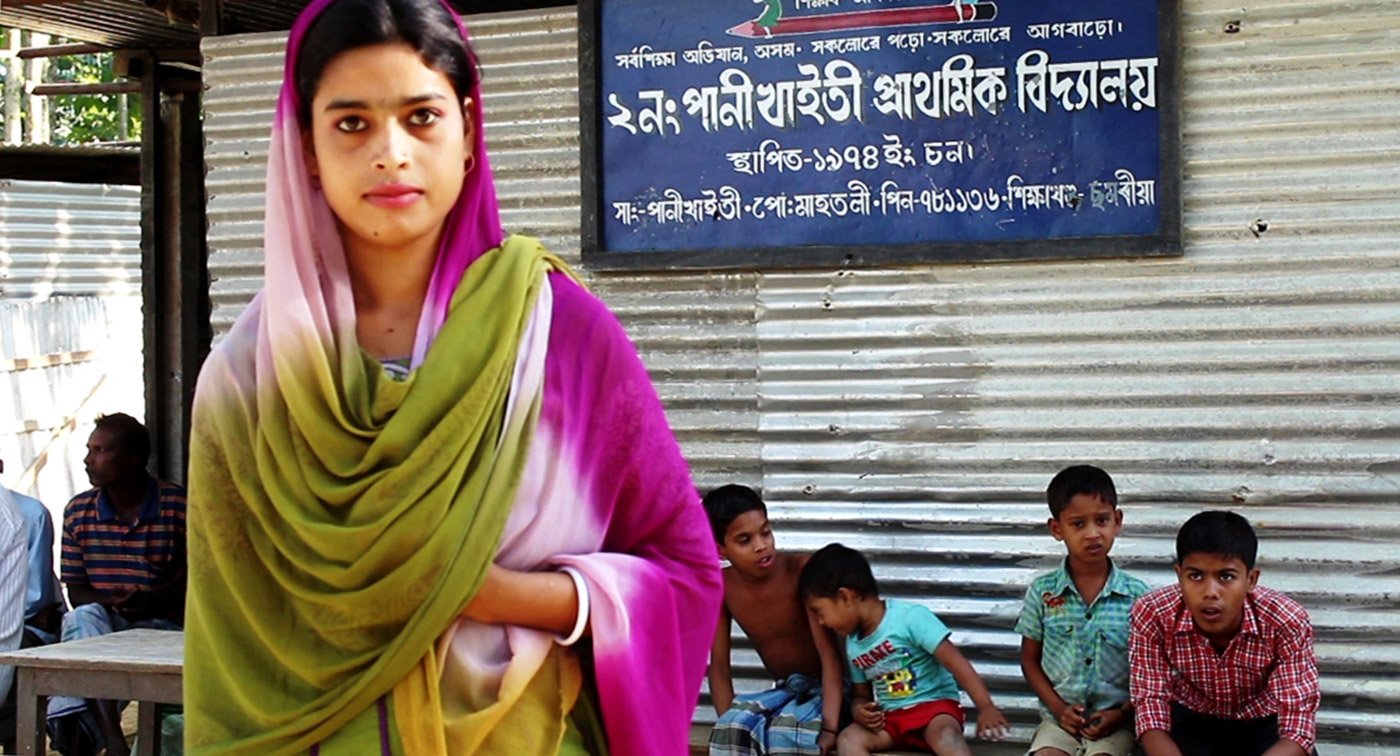
Rehena Rehman, an alumna who is now in college, and sudents at the makeshift structure that now houses No. 2 Panikhaiti School
With his own residence and the makeshift school barely a few metres from the river, Tariq Ali has no idea where he will move if the erosion continues. Many displaced residents have already gone to the towns and cities of Assam in search of land and livelihoods, and enrolment at the school has plummeted from 198 to 85 students.
“It is difficult to trace the children who have already left the school," Ali says. "The uncertainty and risk are so acute that most of the parents did not even bother to collect school certificates for their children. In all likelihood these unfortunate children will drop out.”
The 2014 Assam Human Development Report states that 93.33 per cent of children in the 6–14 age-group are enrolled in schools in the char areas, and 57.49 per cent in the 15-16 age group are, at present, still continuing their education. The corresponding figures for Assam state as a whole are 93.85 per cent and 74.57 per cent. The report also records that char areas account for 33.21 per cent of the out-of-school children in the state, or those who have never enrolled.
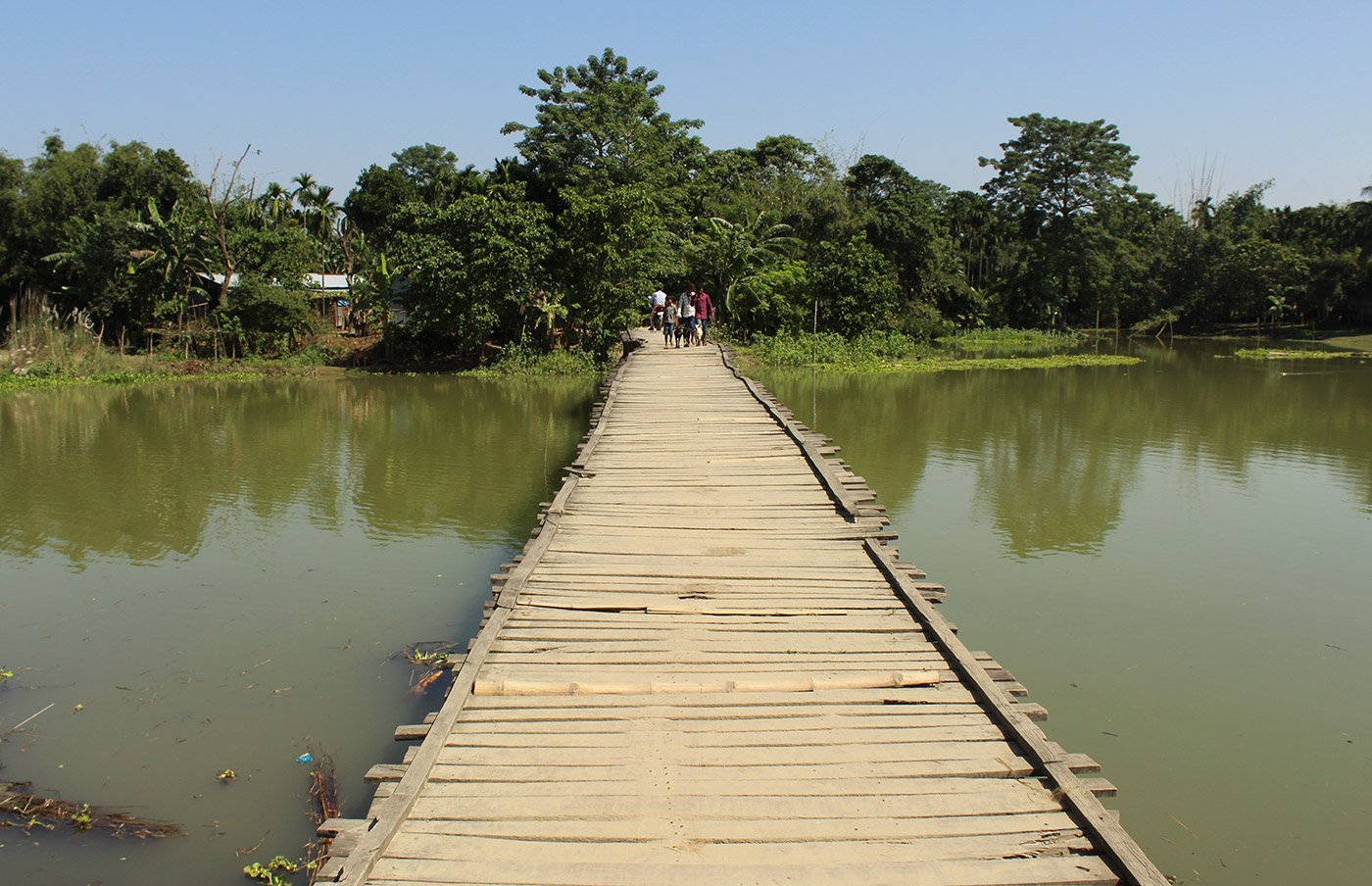
This single wooden bridge connects Panikhaiti to the rest of the world, with an ever-advancing river constantly threatening to cut off the villagers
“Before Panikhaiti, several other revenue villages including Lotoriya, Lotoria Bilorjan, Lotirtari, Goraitari, Borogul, Kuchiardiya Pathar, Jatia Dia No. 1 and Jatia Dia No. 2 were eroded by the river," says Abdus Samad, a local resident. "We asked the government repeatedly to adopt anti-erosion measures and protect our villages, but no one listened.” A former armyman, Samad too has been displaced from his home at least five times and has now settled in Bar Arikati village of Sontali area, adjacent to Panikhaiti.
According to data compiled by Assam's water resources department, the Brahmaputra and its tributaries have eroded over 4.27 lakh hectares of land in the state since 1950. The total eroded area is 7.20 per cent of the geographical area of the state. Land loss due to erosion has been estimated at 8,000 hectares a year on average.
Even Rubeya Khatun, who donated land for the school, was not spared. After losing 10 bighas of homestead and cultivable land to erosion, she now lives with one of her relatives on the banks of the river. She gets no old-age or widow's pension.
The people of Panikhaiti village and Sontali char area are watching worriedly as the river advances towards a stream only 50 metres away. If the river meets the stream, they will be totally cut off, with no access even to the Sontali marketplace. That's life on the char .
Photos: Ratna Bharali Talukdar
